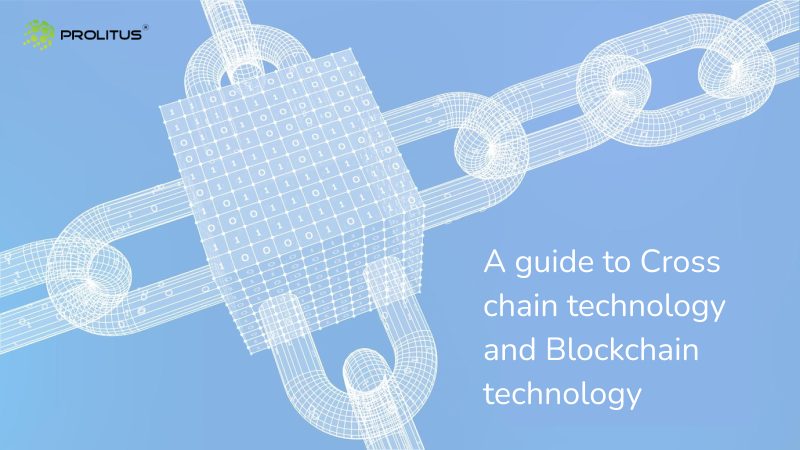Blockchain is a decentralized ecosystem that is based on distributed ledger technology. Presently, users recognize blockchain as a revolutionary technology in several industries. Finance, healthcare, and supply chain are some of the industries that are actively the potential of blockchain.
Blockchain has also enabled users to transmit tokens from one participant to another and execute smart contracts. But, the only problem is that transactions can be carried out within a single blockchain.
Interoperability is a feature for blockchains that allows them to freely exchange data with other blockchains. For example, blockchain A can view the transactions of blockchain B and represent all the latter blockchain transactions.
Atomic swaps are one of the earliest contributors to blockchain interoperability. They allowed users to exchange their assets in a trustless and atomic way. But, they do not permit the transfer of a token from one blockchain to another.
Moreover, cross-chain technology is improving the interoperability between blockchains and favoring the blockchain’s motto of decentralization. This blog will discuss cross-technology, its importance, how it works, and its future.
What is Cross-chain technology?
Cross-chain technology is one of the best ways to improve interoperability between blockchains. It helps to facilitate data interchange across two or more blockchain networks. In addition, cross-chain technology helps to boost flexibility, enhance the security of DLT designs, and resolve performance difficulties.
Sharding can address issues with low throughput and poor scalability. It features a distributed ledger divided into tiny chunks that may be controlled separately, allowing parallel transaction processing to boost performance and scalability
Some potential use cases of cross-chain technology include asset transfers, cross-chain oracles, and cross-chain smart contracts. Asset transfers allow users to transfer assets from one distributed ledger to another. In contrast, cross-chain oracles provide data from one distributed ledger to another instead of changing assets.
Cross-chain smart contracts help to boost automation by allowing a smart contract’s execution on another distributed ledger. But, these contracts need to be executed by issuing transactions on the destination chain, which modifies the distributed ledger’s state.
Why is Cross-chain technology so important?
Cross-chain technology is crucial as it enables users to share data and trade tokens without involving any third party. In addition, it helps to boost blockchain interoperability, which allows two or multiple blockchains to elevate their efficiencies, trade-off decentralization, and security.
Cross-chain technology helps to reduce segmentation significantly, improves chain efficiency, and allows users to communicate across multiple blockchains freely. Hence, it holds immense potential in enabling blockchain interoperability that can solve numerous issues and remove several constraints on blockchain and other networks.
How does Cross-chain technology work?
Protocols and networks shall employ different methods to achieve blockchain interoperability and enable transactions across several chains. Let’s discuss a few of the approaches:
- Swaps at the Atomic Level − Atomic swaps do not involve the interaction of two chains and hence do not count as the true successor of cross-chain communication. Users can coordinate transactions across chains and facilitate direct peer-to-peer bitcoin trading.
- Stateless SPVs − They enable a sophisticated smart contract to authenticate a section of Proof of Work history. The best part of stateless SPVs is that they are cost-effective and can be used for a wide range of applications.
- Relays − Relays help validate a smart contract’s events of one chain with other chains. They can inspect a chain’s entire history and specific headers on demand. The relay strategy balances the security of the relay with its operational costs. However, relays can be very expensive to run.
- Merged Consensus − The usage of a relay chain allows for two-way interoperability between chains. The chain must be built from the ground up to ensure merging consensus. Cosmos and ETH 2.0 implement the joined consensus.
- Federations − A small group of people considers this to authenticate the actions of one chain on another. Although federations are powerful, they require the trust of a third party which jeopardizes blockchain’s decentralization.
What are the advantages of using a Cross-chain system?
Cross-chain technology boasts several advantages that help users to transfer assets quickly. Let’s look at a few of the benefits.
- Cross-chain technology helps to link two separate blockchains for efficient communication. It doesn’t risk blockchain incompatibility and enables users to send information such as assets, transaction receipts, and virtual contracts.
- Cross-chain technology allows for improved scalability than current blockchain technologies. It enables users to communicate with numerous blockchain networks and take advantage of the speed of several blockchains.
- Cross-chain technology helps to improve the data flow and token transmission. The transactions get confirmed instantly and arrive at the destination only when the verification is completed. It eases the entire procedure and allows for seamless data exchange and transmission.
- Cross-chain technology helps to keep markets stable by reducing monopolization. For example, the two popular cryptocurrencies (Bitcoin and Ethereum) account for more than 70% of the global market share. Hence, it is difficult for new businesses to test their strategies and get a footing in the current market.
The Future
Blockchain interoperability and cross-chain technologies are two indispensable aspects of blockchain. Integrating the two concepts widens the scope of cryptocurrency and promotes the idea of blockchain adoption.
Cross-chain technology has immense potential to deal with present-day challenges. Scalability and transparency are two significant aspects this technology addresses in the blockchain ecosystem. Hence, it would be right to say that this technology is a budding future revolution.
Why should you hire Prolitus for your blockchain development services?
Prolitus provides a holistic approach and complete blockchain solution for all clients. It has a suite of industry-leading tools for analyzing blockchain security. Their experienced team offers a hands-on review and focuses on delivering quality products.
Prolitus has helped numerous enterprises safeguard their investments by giving foolproof security audits. In addition, it offers round-the-clock support to help you streamline business processes.
Get in touch with our team to learn more about blockchain services.
Frequently Asked Questions (FAQs)
Q1. What is cross-chain technology in blockchain?
Ans. Cross-chain technology is one of the most effective ways to improve interoperability between blockchains. It helps to facilitate data interchange across two or more blockchain networks.
Q2. Why is interoperability important in blockchain?
Ans. Interoperability helps to resolve the issue of assets and data interaction across several chains. For example, exchanging data is a simple process when two parties utilize the same blockchain platform. However, the same is impossible when the parties use different blockchain platforms.





